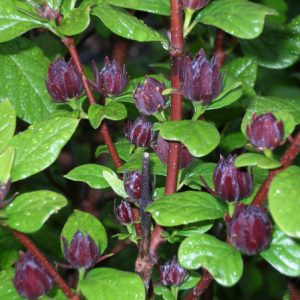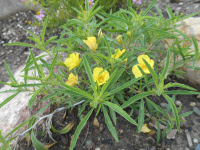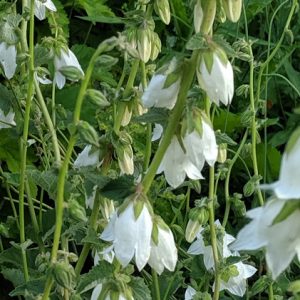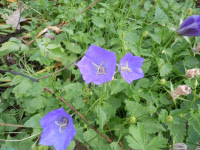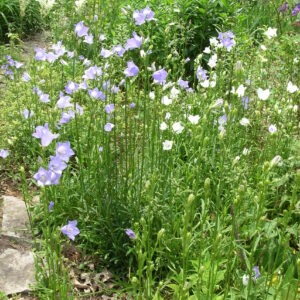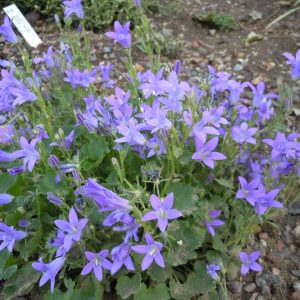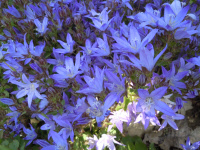Our Plants
Showing 113–120 of 616 results
-
Calycanthus floridus Carolina allspice, Spicebush, Sweet betties Z 5-9
Fragrant claret flowers in spring through summer.
Fragrant claret flowers in spring through summer with glossy foliage, fast growing
Size: 6-8’ x 4’
Care: Sun to part shade in rich moist to moist well-drained soil
Native: Penn to FL west to ILCherokee used Spicebush, medicinally to remedy sores on children, and bladder ailments, for hives, as an emetic and to improve poor eyesight. They also poisoned wolves with the seed and concocted a perfume. 1st collected in 1726 then introduced by Mark Catesby who illustrated it in 1730. Offered for sale in Bartram Garden’s 1783 Broadside, America’s 1st plant catalog. Grown by Jefferson. Crushed leaves give off the fragrance of strawberries with a hint of apple. The bark smells like cinnamon and was used as a cinnamon substitute. A favorite in antebellum gardens in the SE. Mary Lacey Tandy reports that she loved Carolina allspice from the time when she grew up in Kentucky, “they used to pinch off a few flowers, crush them and put into a hanky which they pinned to their dresses for the smell.” Pressed specimen in Emily Dickinson’s herbarium.
**LISTED AS OUT OF STOCK BECAUSE WE DO NOT SHIP THIS ITEM. IT IS AVAILABLE FOR PURCHASE AT OUR RETAIL LOCATION.
-
Calylophus serrulatus Yellow sundrops, Shrubby evening primrose Z 4-9
Lemon yellow silky petals bloom late spring to early fall on this tough-as-nails native
OUT OF STOCK
Lemon yellow silky petals bloom late spring to early fall on this tough-as-nails native
Size: 9-18” x 12-15”
Care: sun in well-drained soil, drought tolerant
Native: Great Plains: Central Canada to TX, Michigan to Montana, WI native1st described in 1818 by Thomas Nuttall, English planthunter who collected hundreds of “new” plants in North America. Caly is Greek for calyx; lophos for “the back of the neck; crest of a hill or helmet” serrulatus means “minutely serrate” or “saw-toothed” describing the leaf margins.
-
Campanula alliariifolia syn. C. gundelia syn. C. kirpicznikovii Ivory Bells Z 3-7
July-August, creamy white bells dangle on spires above heart-leaved foliage. Vigorous. Cut back to promote 2nd flowering
July-August, creamy white bells dangle on spires above heart-leaved foliage. Vigorous. Cut back to promote 2nd flowering
Size: 18-24” x 18
Care: sun to part shade in moist well-drained soil
Native: the Caucasus and Turkey
Wildlife Value: attracts bees, butterflies and birdsCampanula is Latin meaning “little bell.” Described by Carl Ludwig von Willdenow in 1798
Highly touted by Graham Stuart Thomas, who once referred to it as a “picture of poise and beauty,” -
Campanula carpatica Tussock bellflower, Carpathian bellflower Z 3-8
In summer blue, violet or white bells
In summer blue, violet or white bells, excellent at front of border.
Size: 12” x 12-24”
Care: Sun moist well-drained soil, tolerant of Walnut toxicity
Native: Carpathian mountains in central Europe
Awards: England’s Royal Horticultural Society Award of Merit.Campanula is Latin meaning little bell. In 1629 Parkinson described campanulas as “cherished for the beautie of their flowers…” Young roots were eaten in “sallets.” Introduced to European gardens from the Carpathian Mountains in 1774. Sold by McMahon’s Philadelphia nursery in the early 1800’s. Probably cultivated by Jefferson at Monticello.
-
Campanula ochroleuca Bellflower Z 4-7
Ivory, rocket-shaped buds open to bell-like blossoms covered with fine hairs with five, flared petal-ends surrounding ivory stamens and pistil along erect to arching stems. Blooms June-July on slow-spreading, clump-forming rosettes of hairy, heart-shaped or triangular leaves.
OUT OF STOCK
Ivory, rocket-shaped buds open to bell-like blossoms covered with fine hairs with five, flared petal-ends surrounding ivory stamens and pistil along erect to arching stems. Blooms June-July on slow-spreading, clump-forming rosettes of hairy, heart-shaped or triangular leaves.
Size: 12-18” x 12-15”
Care: sun to part shade in moist well-drained to well-drained soil
Native: Caucasus
Wildlife Value: provides pollen to bees and butterflies, rabbit resistantFirst described in a published document in 1949.
-
Campanula persicifolia Peach-leafed bellflower Z 3-8
In May and June outfacing bells blossom along the 2-3' stems in white or clear, sky blue.
In May and June outfacing bells blossom along the 2-3′ stems in white or clear, sky blue.
Size: 24-36" x 12"
Care: Sun in moist well-drained soil, tolerant of Walnut toxicity.
Native: So. Europe and north and west AsiaBoth white and blue varieties grew in English gardens before 1580. Cultivated in America since the 1700’s.
-
Campanula portenschlagiana Dalmatian bellflower Z 4-8
Purple, upfacing bells for months in mid to late summer
Purple, upfacing bells for months in mid to late summer
Size: 4-6” x 20”
Care: full sun-part shade in moist well-drained soil
Native: Northern Yugoslavia
Awards: England’s Royal Horticultural Society Award of Merit. Top rated for ornamental traits and landscape performance by the Chicago Botanic Garden & Elisabeth Carey Miller Botanical Garden Great Plant Pick.Campanula is Latin meaning “little bell.” This species named for one of its discoverers, Franz Edler von Portenschlag-Ledermayer (1772-1822). 1st described in Systema Vegetabilium 5: 93 in 1819
-
Campanula poscharskyana Adriatic bellflower Z 4-8
Riot of lilac colored star-shaped blooms May - June
Riot of lilac colored star-shaped blooms May – June
Size: 6" X 24" spreading
Care: Sun to part shade in moist well-drained soil.
Native: Mountains of Eastern Europe
Awards: Top rated by the Chicago Botanic Garden. Elisabeth Carey Miller Botanical Garden Great Plant PickCampanula is Latin meaning “little bell.” Collected before 1822. Named for 19th century German plantsman, Gustav Poscharsky.

